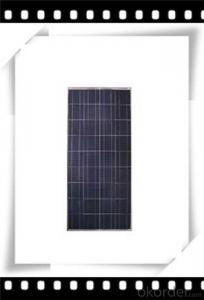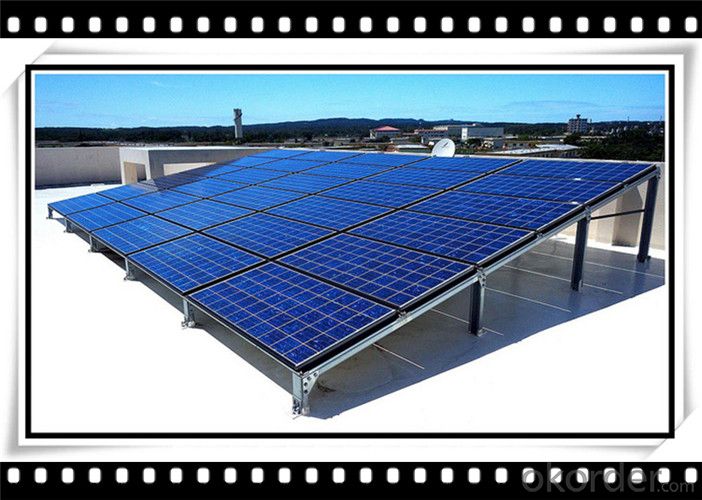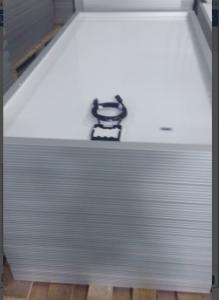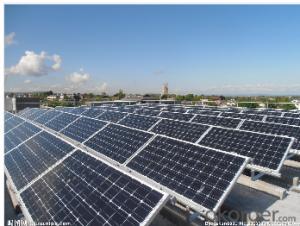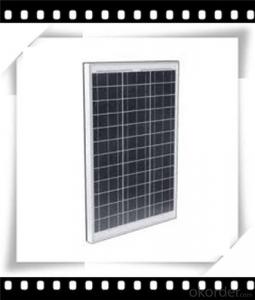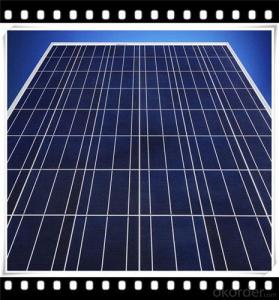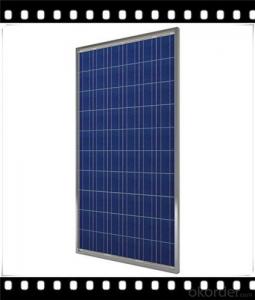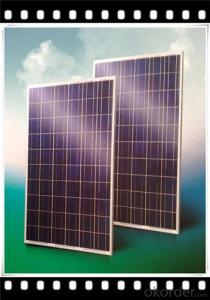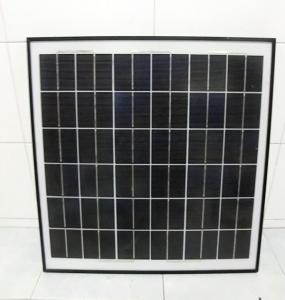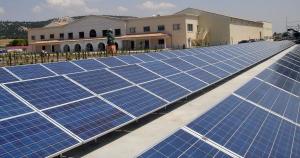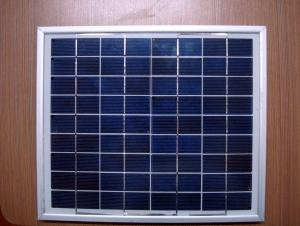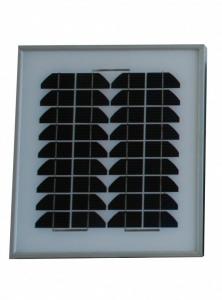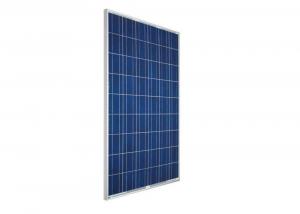Nano Solar Panels 1w Poly Mini Solar Panel Hot Selling CNBM Solar Panels
- Loading Port:
- Qingdao
- Payment Terms:
- TT OR LC
- Min Order Qty:
- 10 set
- Supply Capability:
- 300000 set/month
OKorder Service Pledge
OKorder Financial Service
You Might Also Like
Polycrystalline Solar Modules
CNBM offers a range of small, medium and large polycrystalline solar modules, designed for a range of requirements.
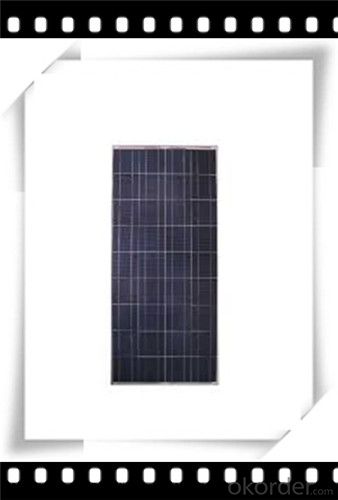
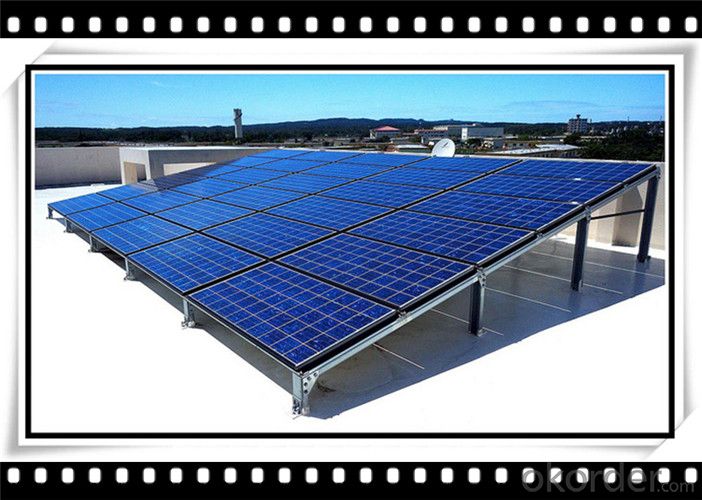
Specifications:
+/-3% |
Polycrystalline silicon solar cells (156 x 156mm) |
60 (10 x 6) |
1650 x 990 x 40 |
25.5 |
Limits:
Operating Temperature | -40~+85? |
Storage Temperature | -40~+85? |
Maximum System Voltage | 1000 VDC max. |
Hail Impact | Diameter of 28mm with impact speed |
Temperature and Coefficients:
NOCT | 48C+/-2? |
Voltage temperature coefficient (%/K) | -0.35 |
Current temperature coefficient (%/K) | 0.05 |
Power temperature coefficient (%/K) | -0.45 |
Characteristics:
Model: | SGM-200P | SGM-210P | SGM-220P |
Max-power voltage Vmp (V) | 29.2 | 29.4 | 29.41 |
Max-power current Imp (A) | 6.85 | 7.14 | 7.48 |
Open-circuit voltage Voc (V) | 36.5 | 36.69 | 36.9 |
Short-Circuit Current Isc (A) | 7.28 | 7.6 | 7.93 |
Max-power Pm(W) | 200 | 210 | 220 |
Model: | SGM-230P |
Max-power voltage Vmp (V) | 29.8 |
Max-power current Imp (A) | 7.72 |
Open-circuit voltage Voc (V) | 37.31 |
Short-Circuit Current Isc (A) | 8.19 |
Max-power Pm(W) | 230 |
STC: Irradiance 1000W/m2, module temperature 25?, AM-=1.5
Poly Crystalline Solar Panels Specifications Range
Maximum Power (Pm) | Dimension | Weight | Operating Voltage (Vmp) | Operating Current (Imp) | Open Circuit Voltage (Voc) | Short Circuit Current (Isc) |
0.45W | 140x80x10mm | 0.08kg | 3.3V | 150mA | 4.6V | 160mA |
1.0W | 162x140x10mm | 0.16kg | 7.5V | 150mA | 10.3V | 160mA |
4.5W | 269x251x23mm | 0.8kg | 16.5V | 0.27A | 20.5V | 0.3A |
10W | 420.1×268.9×22.6mm | 1.92kg | 17.5V | 0.58A | 20.5V | 0.6A |
20W | 425x502x50mm | 3.0kg | 16.8V | 1.19A | 21.0V | 1.29A |
30W | 593x502x22.6mm | 3.9kg | 16.8V | 1.78A | 21.0V | 1.94A |
40W | 655x537x50mm | 5.75kg | 17.3V | 2.31A | 22.1V | 2.54A |
50W | 839x537x50mm | 6.0kg | 17.5V | 2.9A | 21.8V | 3.17A |
65W | 1111x502x50mm | 7.2kg | 17.6V | 3.69A | 22.1V | 3.99A |
80W | 1204x537x50mm | 7.7kg | 17.6V | 4.55A | 22.1V | 4.8A |
- Q: Can solar panels be installed on windows?
- Yes, solar panels can be installed on windows. There are specialized solar window films and transparent solar panels available that can be affixed to windows, allowing them to generate electricity from sunlight while still maintaining visibility. These innovative technologies enable solar energy harvesting even in urban environments with limited roof space.
- Q: I would like to know if I had a mobile kitchen could I power it from solar panels mounted atop the vehicle (truck).(to power electric kitchen equipment, i.e. stove, deep fryer.), instead of propane…could I possibly connect the solar panels to a battery to save my generated electricity? If solar panels would not be enough power could a small windmill suffice…?
- Nice enough idea you have there, but practical reality is waiting to bring you back to your senses. The appliances you want to operate take a lot of power. You would need an awful lot of solar cells or a very cumbersome windmill to provide sufficient energy for them. You will find that for a mobile kitchen, an ordinary generator running on gasoline or diesel will be much less expensive to buy and maintain, less trouble to haul around, and much easier to replace if necessary. Considering that propane will probably prove less expensive yet, go with that for as many appliances as possible.
- Q: Can solar panels be used in areas with high levels of humidity?
- Yes, solar panels can still be used in areas with high levels of humidity. While humidity can potentially impact the performance of solar panels, they are designed to withstand various environmental conditions. Modern solar panels are built with protective layers and are tested to ensure durability and efficiency in different climates, including high humidity areas. Additionally, regular maintenance and cleaning can help mitigate any potential effects of humidity on solar panel performance.
- Q: How much does it cost to replace a solar panel?
- The cost of replacing a solar panel can vary depending on several factors such as the size, type, and quality of the panel, as well as any additional installation or labor costs. On average, the cost can range from a few hundred dollars for a small residential panel to several thousand dollars for a larger commercial panel. It is always best to consult with a solar panel installer or supplier to get an accurate estimate based on your specific needs and requirements.
- Q: I want to get solar panels but not spend 20,000!! I found out that you can get a panel to run only your AC unit, I also found something that will run my pool pump! Anyone own either of these? How did you do? Where did you go? How much was it, and was it hard to install?
- Your problem will be the days that are too cloudy, rainy, (snowy won't apply since you will need A/C during summertimes) and the night hours when there is no sunlight. A battery might be okay for a while but if you have to have a good one. Is there is a battery that can run an air conditioner for long without crapping out! I don't think you will ever recoup your investment.
- Q: I had someone quote me for solar panels on my house but I can't afford it. They were talking about how I have enough room and the perfect location to put many of them and actually get paid for it. I have about a half acre that is tiered and points in the correct direction for them to get pretty much the full day sun. Additionally, I live in so cal where it is sunny most of the year. Does anyone know if solar companies will lease or install them to get the payback? I would be happy to allow them to use the land just to cover my electrical expense and they could have any payback.
- There okorder /... The article below gives some other creative ways to finance a PV system.
- Q: Can solar panels be installed on bus stops or shelters?
- Yes, solar panels can be installed on bus stops or shelters.
- Q: How about using Solar Panals to provide the electrical power to separate the H2 from the O? H2 would be fed into the engines carburator like a gas/air mixture ratio, but H2/air mixture ratio instead. How would you control the exact measurements?
- It's an idea that will be done someday. But right now the problem is that there are much cheaper ways to get energy and run cars. So no one would use this one, because it just costs too much. As other sources of energy get costlier, and we figure out how to make solar panels better and more cheaply, this will be done. The best way known now to use the hydrogen in a car is to put it into a kind of electricity generator called a fuel cell. Then the electricity runs an electric motor. Controlling the measurements into the fuel cell is pretty easy just with a simple flow meter.
- Q: We see increasing, what appear to be, solar panels on electric poles?
- Create okorder /
- Q: Well my dad has been into Solar panels for quite a while, his birthday is coming up and i want to get him a small minature one, so he can toy around with it and be able to use it as expirience for when he gets a bigger one. my dad has been doing ALOT of studying, and i've been looking online but idk what kinda kits to get so should i get a 0w kit, 5w kit, or 20w kit? which one would be best to fool around with and play with? thanks
- Go with the 20W kit. Possibly he can get this going and light up a 5 watt bulb? Does he have an inverter? Sounds like fun! I may look into this later. I did notice that our interstate uses these small ones along the way for something. I have something more interesting; plans for a window solar panel box made out of most scrap items lying around. Just moved so have to unpack and find those plans! Anyway, have fun and hope your dad likes his kit.
Send your message to us
Nano Solar Panels 1w Poly Mini Solar Panel Hot Selling CNBM Solar Panels
- Loading Port:
- Qingdao
- Payment Terms:
- TT OR LC
- Min Order Qty:
- 10 set
- Supply Capability:
- 300000 set/month
OKorder Service Pledge
OKorder Financial Service
Similar products
Hot products
Hot Searches
Related keywords
